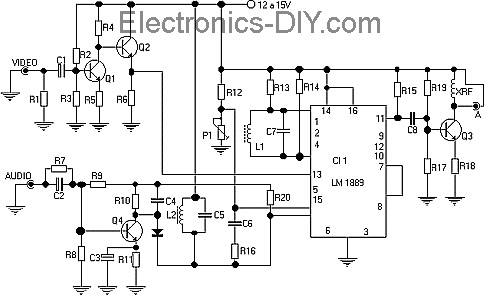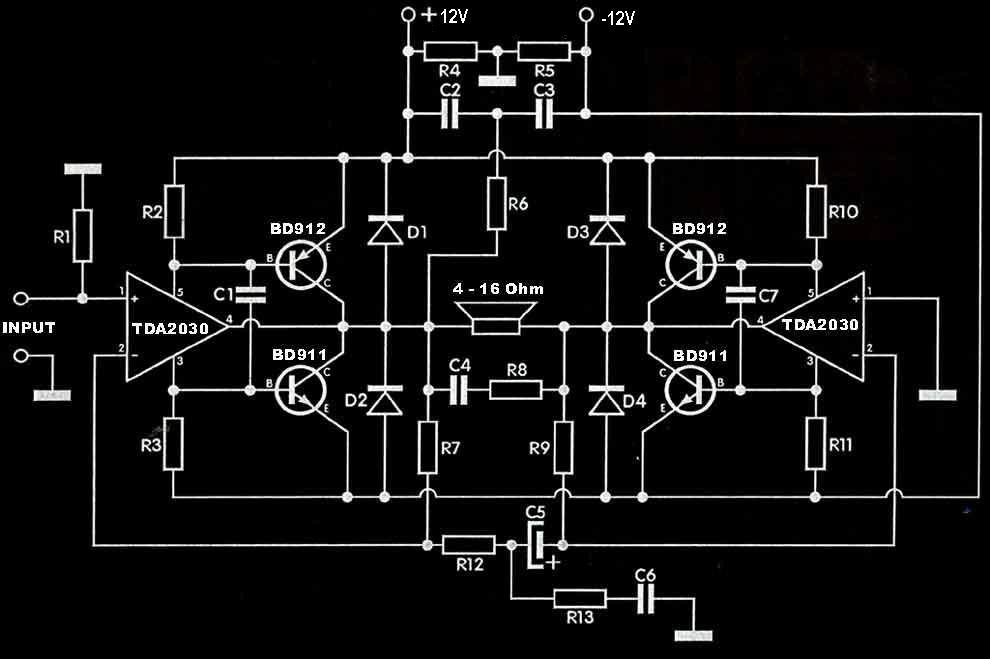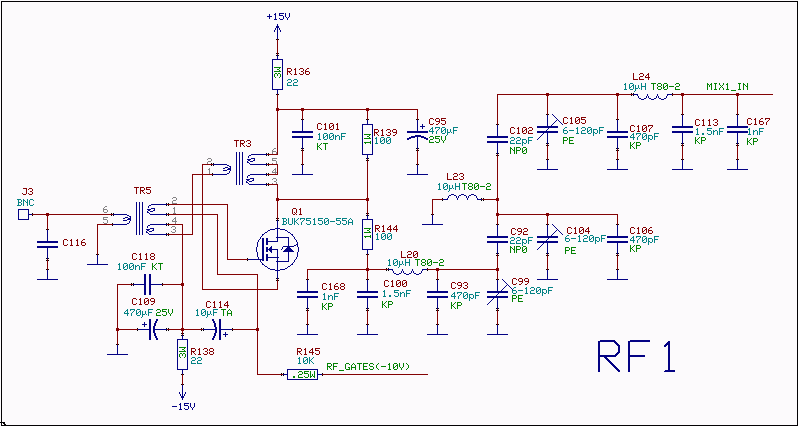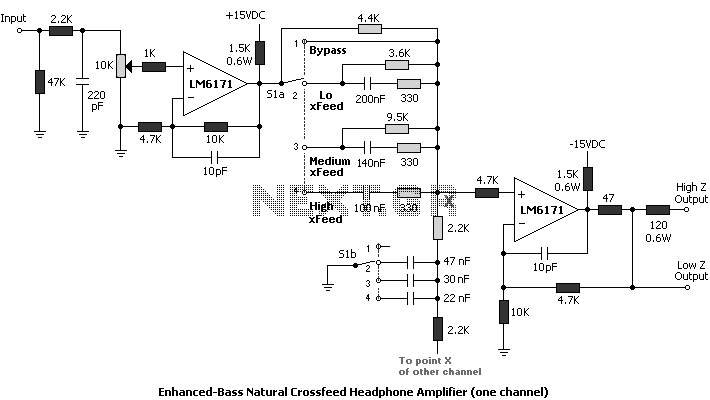
10 Watts Mosfet Audio Amplifier
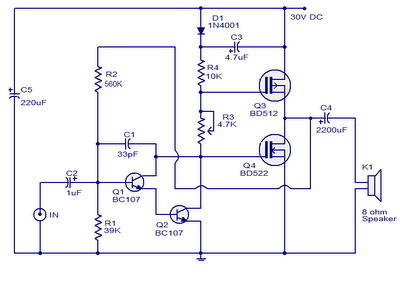
This is a 10W MOSFET audio amplifier circuit that operates from a single power source. Single rail configurations are seldom used in Class B power amplifiers; however, they are suitable for low-power applications like this one. This circuit design is based on an older cassette player that remains functional and has been republished as is. The BD512 and BD522 power MOSFETs are now obsolete, but alternative power MOSFETs can be used in their place. Transistors Q1 and Q2 are configured as a Darlington pair, functioning as a preamplifier. Resistor R3 is a preset that adjusts the quiescent current, while resistor R2 serves a supporting role. The output is coupled to the speakers via capacitor C4, capacitor C5 acts as a power supply filter, and capacitor C2 is used as the input DC decoupling capacitor.
The 10W MOSFET audio amplifier circuit is designed for simplicity and efficiency, making it ideal for applications where space and power consumption are critical. The circuit employs a single power supply rail, which simplifies the design and reduces the number of components required. The use of MOSFETs in this configuration allows for high efficiency and low distortion, making it suitable for audio applications.
The Darlington pair formed by transistors Q1 and Q2 enhances the input impedance and provides significant current gain, which is beneficial for driving the MOSFETs. The quiescent current, controlled by the adjustable resistor R3, is crucial for minimizing crossover distortion in Class B amplifiers. Proper adjustment ensures that the amplifier operates efficiently without overheating.
Capacitor C4 plays a vital role in coupling the output signal to the speakers, ensuring that only the AC audio signal passes while blocking any DC component that could damage the speakers. Capacitor C5 helps stabilize the power supply by filtering out noise, ensuring that the amplifier operates smoothly under varying load conditions. Capacitor C2, as the input DC decoupling capacitor, prevents any DC offset from the input signal from affecting the performance of the amplifier.
This circuit is an excellent choice for small audio amplification needs, such as in portable devices or low-power audio systems, providing a reliable solution with readily available components.Here is a 10W MOSFET audio amplifier circuit, sound that only requires a single source. Single railway material rarely used in power amplifiers class-B. However, for low power applications like this is very thin. Actually I have this circuit a old cassette player is still working and republish as it is. The BD512 and BD522 power MOSFETs is obsolet e now and you can use any other power MOSFET game instead of them. Transistors Q1 and Q2 are connected as a Darlington pair works as a preamp. R3 preset controls the quiescent current, while R2 provides. Output is coupled to the speakers through capacitor C4. Capacitor C5 is the power supply filter and C2 is the input DC decoupling capacitor. 🔗 External reference
The 10W MOSFET audio amplifier circuit is designed for simplicity and efficiency, making it ideal for applications where space and power consumption are critical. The circuit employs a single power supply rail, which simplifies the design and reduces the number of components required. The use of MOSFETs in this configuration allows for high efficiency and low distortion, making it suitable for audio applications.
The Darlington pair formed by transistors Q1 and Q2 enhances the input impedance and provides significant current gain, which is beneficial for driving the MOSFETs. The quiescent current, controlled by the adjustable resistor R3, is crucial for minimizing crossover distortion in Class B amplifiers. Proper adjustment ensures that the amplifier operates efficiently without overheating.
Capacitor C4 plays a vital role in coupling the output signal to the speakers, ensuring that only the AC audio signal passes while blocking any DC component that could damage the speakers. Capacitor C5 helps stabilize the power supply by filtering out noise, ensuring that the amplifier operates smoothly under varying load conditions. Capacitor C2, as the input DC decoupling capacitor, prevents any DC offset from the input signal from affecting the performance of the amplifier.
This circuit is an excellent choice for small audio amplification needs, such as in portable devices or low-power audio systems, providing a reliable solution with readily available components.Here is a 10W MOSFET audio amplifier circuit, sound that only requires a single source. Single railway material rarely used in power amplifiers class-B. However, for low power applications like this is very thin. Actually I have this circuit a old cassette player is still working and republish as it is. The BD512 and BD522 power MOSFETs is obsolet e now and you can use any other power MOSFET game instead of them. Transistors Q1 and Q2 are connected as a Darlington pair works as a preamp. R3 preset controls the quiescent current, while R2 provides. Output is coupled to the speakers through capacitor C4. Capacitor C5 is the power supply filter and C2 is the input DC decoupling capacitor. 🔗 External reference

.gif)
